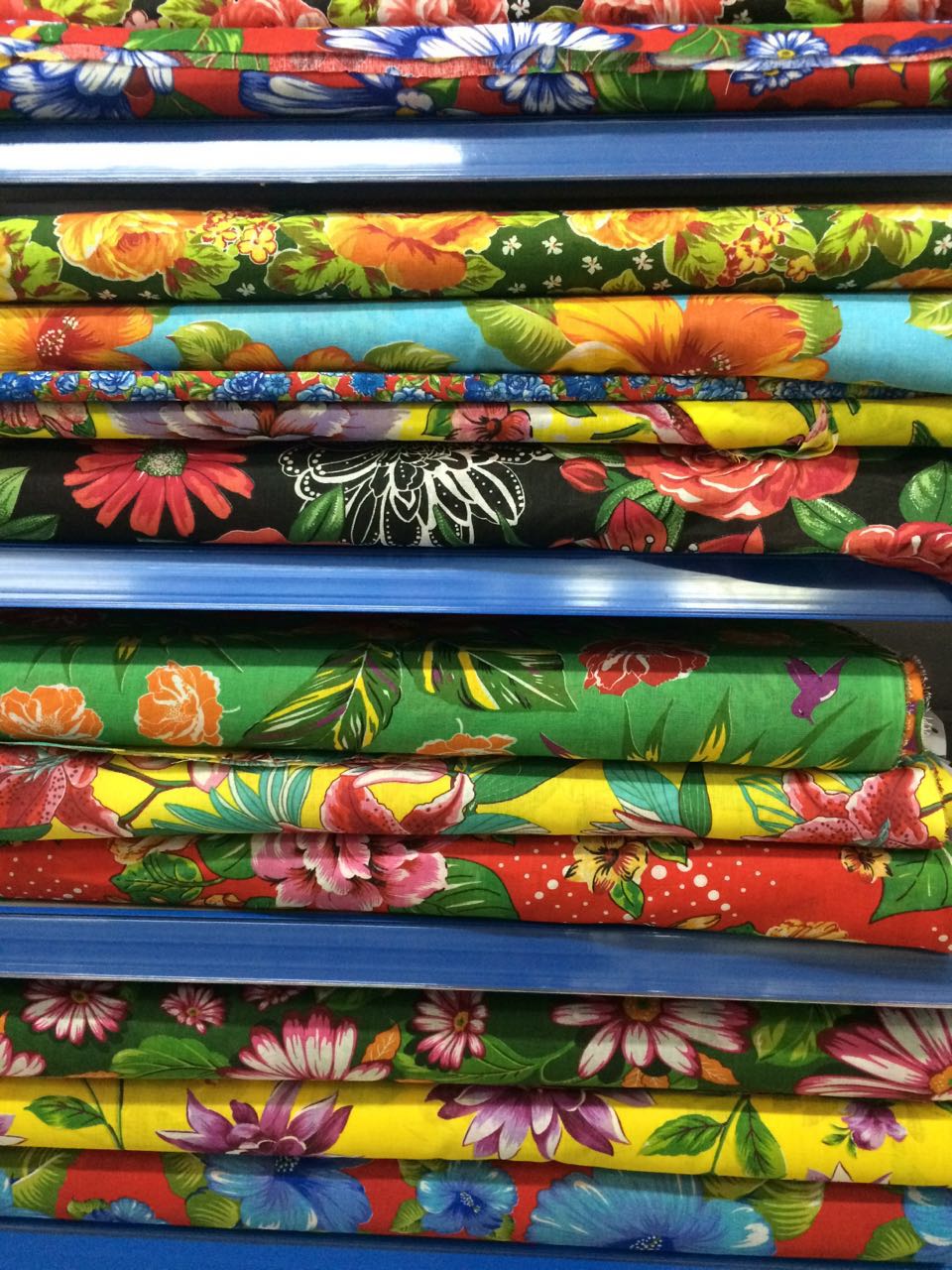Tropical vibes, floral extravaganza and saturated Carnaval colors are some of the characteristics of the Brazilian Chita Textiles. But chita is more than a cheerful textile found everywhere and on everything in the South American country—it’s a cultural icon.
Brazilians (Brasileiros) splash the big bold florals on everything from cushions to aprons to totes, and the prints can be spotted on the streets of Brazil and also on high-end runway models.
It’s easy to assume that vibrant chita is simply a natural reflection of sun-loving, easy-going Rio or the uninhibited joy of Carnaval, but it turns out that the Brazilian government was instrumental in convincing its citizens to embrace chita as a symbol of national pride.
The story starts way back when modern-day Brazil was still a Portuguese colony, and Portugal worried that a thriving colonial textile industry would threaten the market for its own pricey textiles being imported into the colony for sale. Queen Maria I banned all textile production in the colony from 1785 to 1808.
But that didn’t stamp out local weaving. Indigenous people had been growing, spinning, and weaving cotton long before the Portuguese arrived. Production of plain, lightweight cottons continued apace.
Getulio Vargas, who served as President from 1930-1945 and again from 1951-1954, was particularly adept at promoting this idea of Brasilidade, or Brazilianness, and he linked the idea of nationhood to the formation of a cultural identity. He encouraged people to celebrate the country’s own materials, processes and natural beauty.
The government pumped out stories in every newspaper and glossy magazine it could touting the virtues of chita prints. Famed costume designer Edith Head was even paid to visit the country in the 1950s and extol the superior quality and vivid designs of the fabric.
Happily, the plot worked, and with their exuberant palettes and irrepressible botanical motifs chitas are now firmly ensconced as a key part of Brazil’s visual character. And countless surfaces/products are all the better for it.

